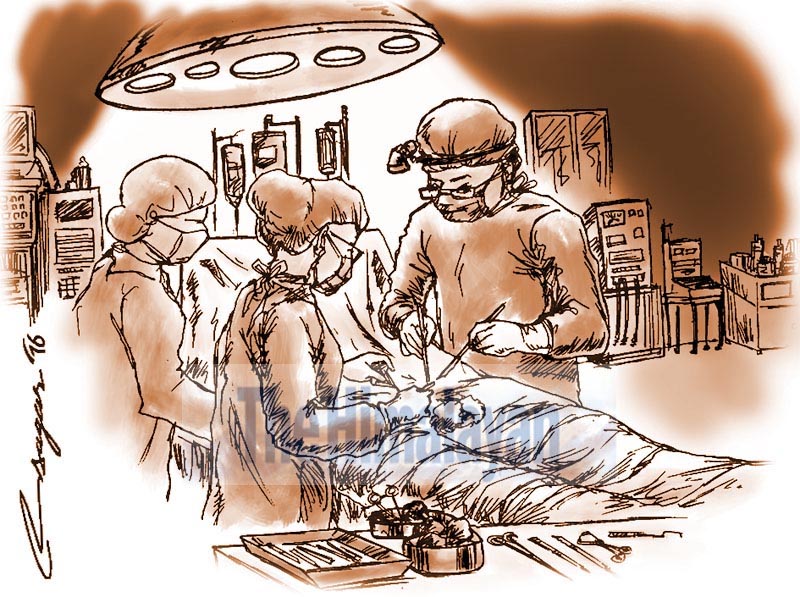Doctors for increasing awareness
Kathmandu, July 20
Despite provisions allowing organ donation from brain-dead persons, lack of awareness has not led to increase in the rate of cadaveric organ donation in the country.
Experts say lack of awareness, superstitious beliefs, various socio-cultural, religious and economic factors are responsible for this.
Only six kidney transplants from three braindead donors have been conducted since 11 May 2017, said Pukar Chandra Shrestha, senior liver and kidney transplant surgeon and executive director at Sahid Dharma Bhakta National Transplant Centre.
The government had endorsed the Human Body Organ Transplantation (Regulation and Prohibition) Regulations 2016, paving the way for transplantation of organs from brain-dead patients. Organs can be donated from cadaveric donors who have sustained brain-death (due to severe brain injury).
Brain death means the state where the receptive and responsive activity of the brain (including brain stem) of any person has stopped and cannot be restored.
In this state, eye movement, corneal reflection, swallowing and motor activity also stop.
Renuka Kamatad, 30, of Kathmandu has been suffering renal failure since the last five years but she has not yet been able to undergo renal transplant as she doesn’t have any close relative who can donate kidney. There are more than 500 such renal failure patients who are on the waiting list for transplantation from brain-dead persons in SDNTC.
“If awareness of cadaveric organ donation is raised we will be able to resolve the problem of organ transplantation,” added Shrestha.
Eight organs — kidneys, lungs, corneas, heart, liver, pancreas, small intestine, and skin can be harvested from one braindead person.
According to Nepal Police more than 1,000 persons die in accidents each year. “If we can use organs from the brain-dead, we will be able to save a significant number of lives,” said Shrestha.
Convincing the victim’s family is the biggest challenge as they are in acute grief after the death of family member/s. They could also misinterpret the doctors, said Shrestha.
Coordination between hospitals and SDNTC is important as it is the only centre designated as coordination unit for cadaveric organ donation and transplantation, said Shrestha.
The government is trying to extend this service in all seven provinces. One coordination unit for cadaveric organ donation and transplantation is not enough to meet the demand. More hospitals should be given permission. It will ease transplantation problems that patients face across the country, said Dibya Singh Shah, chair of Organ Transplant Coordination Committee.
The need for human organs is likely to increase as progress in organ transplantation is made. Liver and kidney diseases too are on the rise. Nearly 3,000 people in Nepal develop kidney failure annually, said Rishi Kumar Kafle, senior nephrologist.
It is estimated that 150 liver transplants are necessary in the country every year, said Ramesh Singh Bhandari, gastrointestinal and hepato-pancreato-biliary surgeon at Tribhuvan University Teaching Hospital.
The hospital has started liver transplantation from June. The demand for liver will increase in future. If we can make people aware of cadaveric organ donation, it will help needy patients.
Our patients will not have to go abroad for treatment and transplant, said Bhandari. “This will also curb illegal trade in organs and reduce gender bias on who can receive organs, said Shrestha.






